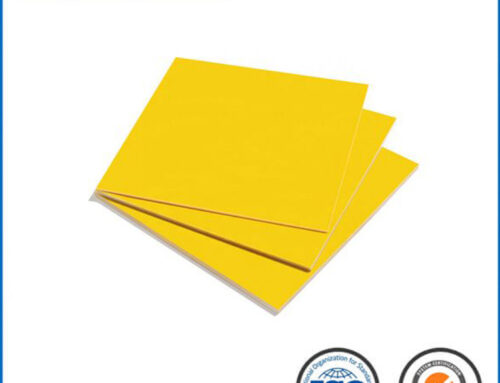1.0 Scope
This method describes a technique for evaluating a material to resist tracking when subjected to a low current arc just above the surface of the material. It can be used on materials of various thickness by stacking materials. This procedure is based on techniques described in ASTM D495.
2.0 Applicable Documents
ASTM D495 Standard Test Method for High Voltage, LowCurrent, Dry Arc Resistance of Solid Electrical Insulation Manufacturer’s Instruction Manual.
3.0 Test Specimens
3.1 Number Three specimens shall be used unless otherꢀwise specified.
3.2 Form Each specimen shall be 3.0 in. x 2.0 in. Material under 0.06 in. in thickness shall be built up to provide a specimen at least 0.06 in. but not exceeding 0.125 in. For very thin laminates a 1/16 in. laminate of the same type may be used under the actual specimen subjected to the arc, permitting a reduction of the material required without significantly affecting the result.
3.3 Location Specimens may be cut from any location in a sheet (except from the outer 1 in. of full size sheets).
3.4 Foil Clad Materials All foil clad materials shall have the foil removed by etching and shall be thoroughly cleaned prior to conditioning or testing.
4.0 Apparatus/Materials
4.1 Arc tester (Beckman ART-11 or equivalent, see ASTM D495).
4.2 Tungsten electrodes (Beckman2 or equivalent, see ASTM D495).
4.3 Constant temperature water bath capable of 50°C ± 2°C, filled with distilled water.
4.4 Beaker or pan filled with ambient temperature distilled water.
4.5 Racks for supporting specimens in the water bath with all surfaces exposed.
4.6 Shear, saw or paper cutter for cutting specimen.
4.7 Alcohol or other solvent for cleaning electrode.
4.8 Crocus cloth.
4.9 Gage blocks for checking electrode spacing 0.248 in. and 0.252 in.
4.10 Lint free paper towels.
4.11 Variac3 autotransformer type W1OMT or equivalent.
5.0 Procedure
5.1 Preconditioning Unless otherwise specified the specimens shall be conditioned for 48 hours (± 2 hours -0 hours) in distilled water maintained at 50°C ± 2°C. Following this step the specimens shall be immersed in ambient temperature disꢀ tilled water for 30 minutes minimum, 4 hours maximum, to allow them to reach temperature equilibrium without loss of moisture.
5.2 Test Conditions The test shall be run at ambient temperature 23°C ± 5°C and ambient humidity.
5.3 Equipment set up
5.3.1 The electrode assembly shall be cleaned thoroughly using alcohol or other suitable solvent and, if required, with crocus cloth. The electrode gap shall be adjusted if necessary to provide a gap of 0.250 in. ± 0.002 in. when the electrodesrest on the test specimen.
5.3.2 The arc tester should be set up for operation in the automatic mode.
5.3.3 Set the Variac to the voltage which produces 12,500 volts based on the last calibration of the Instrument (generally 105V to 115V).
5.3.4 Reset the timer on the tester to ‘‘0’’ seconds if required.
5.4 Test Procedure
5.4.1 Remove a preconditioned specimen from the ambient temperature distilled water and wipe dry with a lint free paper towel.
5,4.2 Place a specimen (individual or built up) in the electrode fixture.
5.4.3 Operate the tester in accordance with the manufacturer’s instructions such that an arc is generated and automatically switched as indicated below. Time (sec) On/Off Time Amperage 0-60 0.25 sec/1.75 sec 10 milliamps 60-120 0.25 sec/0.75 sec 10 milliamps 120-180 0.25 sec/0.25 sec 10 milliamps 180 continuous 10 milliamps.
5.4.4 Observe the arc carefully and, at the point which the arc disappears and tracking occurs, stop the timer and record the time for the specimen to the nearest second.
5.4.5 Remove the specimen, remove and clean the electrodes thoroughly using a solvent and if necessary the crocus cloth.
5.4.6 Replace the electrode and check the electrode gap.
5.4.7 Reset the timer and proceed as in 5.4.1 through 5.4.6.
5.5 Calculation
5.5.1 Average the values of the specimens tested from the same sample and round to the nearest second.
5.6 Report
5.6.1 Report the average value of the arc resistance in seconds.
5.6.2 Report the ambient temperature and relative humidity at the time of the test.
5.6.3 Report how the specimen was prepared, e.g. individual, # of plies built up, or with a spacer.
5.6.4 Report the preconditioning procedure.
5.6.5 Report any anomalies in the test or variations from procedures or tolerances specified.
6.0 Note
6.1 The results of arc tests may be significantly affected by contamination of the electrodes. Any irregularity of the arc in the early portion of the test may be an indication of contamination. If this occurs, the test should be stopped, the electrodes cleaned and a fresh specimen should be tested (or the test may be run in a different area of the same specimen).
6.2 While values for reinforced material may vary with the grain direction of reinforcement, the effect is generally insignificant with glass reinforced product. At least one specimen in both machine and transverse direction is recommended to verify this.




